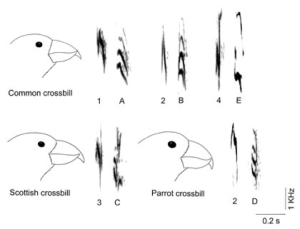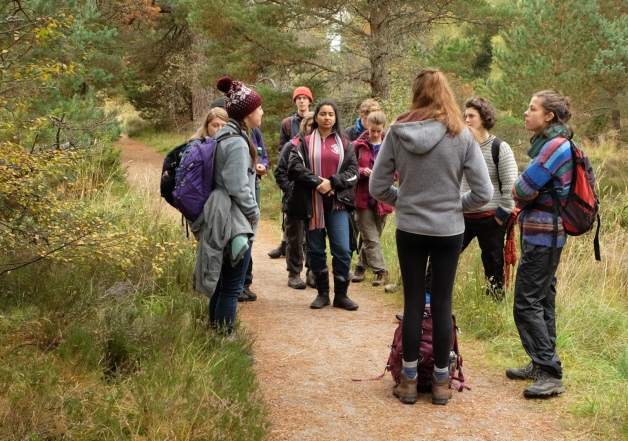The Scottish crossbill, Loxia scotica or ‘cam-ghob’ in Gaelic has been named the UK’s only endemic bird species. This feathered clan inhabit the pine forest of the Scottish highlands and even have their own tartan. We explored the niche occupied by the Scottish crossbill and what it means to be a species in today’s conservation strategies.
There are three species of crossbill in the UK; the Scottish, common and parrot crossbill. Though similar in morphology, varying bill depths apportion resource availability. Largely feeding on pine and spruce cones, the common crossbill with it’s smaller bill is unable to access closed pine cones earlier in the season. This leads to reproductive isolation of the species as the parrot and Scottish crossbill are able to feed on these closed cones and lay eggs earlier in the year. Species are also isolated through different calls leading to assortative mating. Though the three crossbill species have been known to inhabit the same forest, interbreeding is highly limited.

Sonograms show the main flight (1-5) and excitement (A-E) calls of Common, Scottish and Parrot Crossbills (Summers et al. 2007)
The sonograms show the main flight (1-5) and excitement (A-E) calls of Common, Scottish and Parrot Crossbills (taken with permission from Summers et al. 2007). Note that Common Crossbills show three different sets of calls, whereas Scottish and Parrot Crossbills only one.
DNA analysis of the three species has found no significant difference between microsatellite and mitochondrial DNA. Though bill depth is inherited, it is currently unknown as to whether species calls follow suit or whether this is learned behaviour. This brings into question whether the Scottish crossbill can truly be defined as a separate species. Indeed in 2010 Birdlife considered demoting the Scottish crossbill from species status, though retracted the idea due to public pressure.
But how important is it whether the Scottish crossbill is identified as a species? The Scottish crossbill is protected by the European birds’ directive, on the IUCN red list and has RSPB amber conservation status. Demotion to subspecies would likely be detrimental to its conservation. So while we may question whether the Scottish crossbill is a species in its own right, this case study also raises concern as to how our definition of a species directs conservation efforts and whether this is an area which needs addressing.
We hunted high and low for the Scottish crossbill across the Rothiemurchus estate. Our attempts to track down the crossbill may have come to nothing, but we will find them one day, somewhere, not written down on any map; as the true places never are.
By Sophie (demonstrator)


Pingback: Conservation in the Cairngorms | Cons. Sci.
Pingback: Conservation in the Cairngorms – Gergana Daskalova
Pingback: The Cons. Sci. 2017 field trip | Cons. Sci.